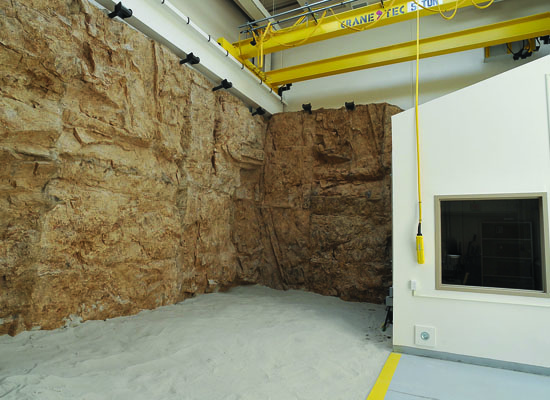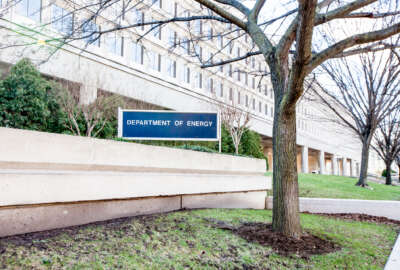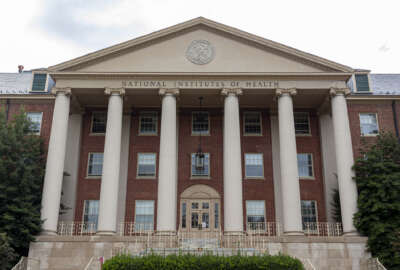Navy tests cutting-edge technologies at new research lab
Federal News Radio\'s Jared Serbu tagged along for a tour of the Navy\'s new Laboratory for Autonomous Systems Research, where robots get to interact with the real...

The Navy is putting the final touches on a new laboratory that officials say will get cutting-edge technologies into the hands of warfighters much faster and much more cheaply.
The Navy’s new 50,000-square feet Laboratory for Autonomous Systems Research houses environments — from tropical rain forests to deserts — for testing robots.
The lab will not get rid of the need to do operation testing of new systems. But, said Rear Adm. Matt Klunder, chief of Naval Research, the real-world environments make the testing process a lot easier. Before, the Navy would have to reserve a range, often months in advance.
“I’d much rather test some of those critical components here and do it in a more…cost-effective way than go and spend a ton of money at a range somewhere and find out, Oh, I just busted it and the testing is done,” Klunder said.
The rainforest part of the building here in southeast Washington is so new that there aren’t any actual experiments happening yet. The southeast Asian trees are still adorned with yellow tags from the nursery. All of the essential features of a rain forest are present, from natural light to a glass ceiling open to the sky and to temperature and humidity control, said Alan Schultz, director of the new lab.
Down the hall is the desert environment, where an advanced robot is working on detecting and digging up improvised explosive devices. Meanwhile, in the littoral environment, researchers are trying to get robots to swim like fish along a reef.
Lenny Tender, from the Naval Research Lab’s center for biomolecular science and engineering, is working on ways to let underwater robots recharge their batteries constantly via sediment on the sea floor.
“Essentially the sea floor is large, ready-made battery. We just have to install a couple of electrodes to make it work,” Tender said.
The idea could have major implications for everyday civilian life too. Just next door to the research lab is DC’s sewage treatment plant,one of the largest in the world. Tender said waste-water treatment accounts for about 5 percent of the nation’s total energy consumption today. He said he thinks his process might be able to switch those plants from being big energy consumers to big energy producers.
RELATED STORIES
Navy lab researches cutting-edge technologies in ocean, rain forest — without leaving the office
Naval research lab replicates rain forest, desert conditions
Copyright © 2025 Federal News Network. All rights reserved. This website is not intended for users located within the European Economic Area.
Jared Serbu is deputy editor of Federal News Network and reports on the Defense Department’s contracting, legislative, workforce and IT issues.
Follow @jserbuWFED







